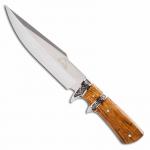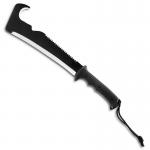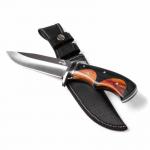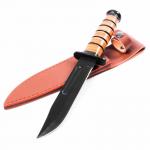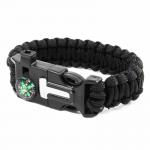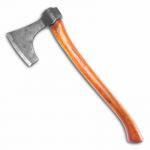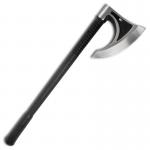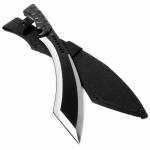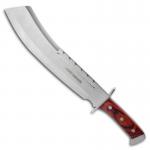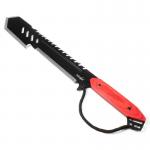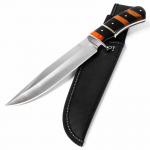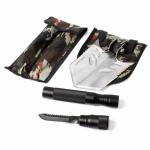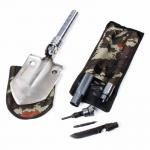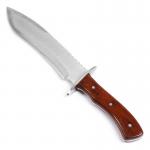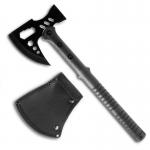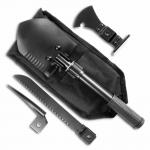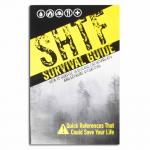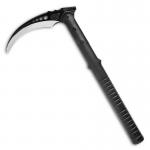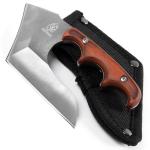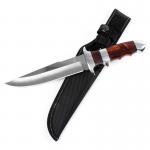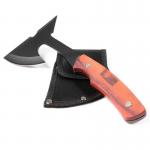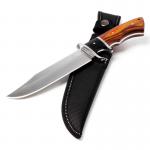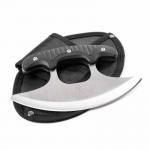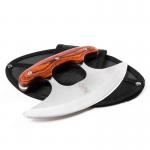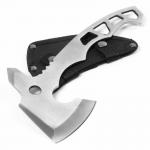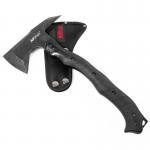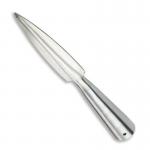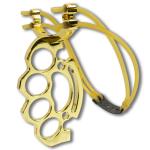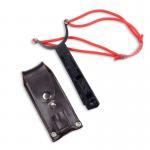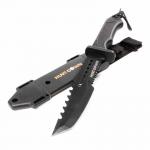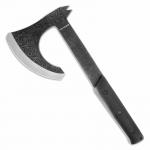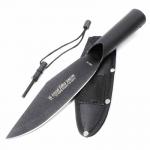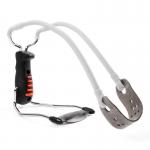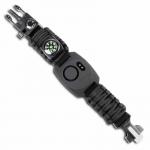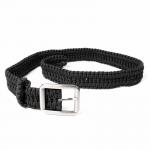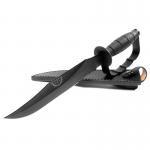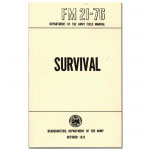Outdoor Survival Gear & Prepper Tools
-
$17.95
-
$49.95
-
$22.95
-
$24.95
-
$14.95
-
$199.95
-
$32.95
-
$49.95
-
$17.95
-
$44.95
-
$92.95
-
$59.95
-
$39.95
-
$54.95
-
$104.95
-
$39.95
-
$29.95
-
$59.95
-
$36.95
-
$99.95
-
$119.95
-
$22.95
-
$32.95
-
$39.95
-
$32.95
-
$23.95
-
$24.95
-
$29.95
-
$44.95
-
$144.95
-
$39.95
-
$43.95
-
$29.95
-
$34.95
-
$39.95
-
$34.95
-
$44.95
-
$30.95
-
$13.95
-
$79.95
-
$32.95
-
$19.95
-
$32.95
-
$26.95
-
$24.95
-
$21.95
-
$39.95
-
$22.95
-
$21.95
-
$21.95
-
$39.95
-
$24.95
-
$29.95
-
$24.95
-
$38.95
-
$14.95
Let's talk knives first, because they're the backbone of any real outdoor survival gear setup. We carry everything from classic bowie knives to field-tested skinner knives and rugged hunting blades. You'll also find karambits, tracker knives, kukris, and even traditional ulu knives that have been used for generations in arctic environments. These knives are built for real work. Cut rope, gut fish, carve tent stakes, or keep them handy for self-defense. If you're out in the wilderness or stuck in a survival situation, a good blade can mean the difference between eating and starving.
A lot of people overlook the value of a solid walking stick, but the ones we offer aren't just for balance on rough terrain. Many of our survival walking sticks break down for easy transport and have hidden tools in the handle like blades, fire starters, and even saws. They're lightweight but tough, and perfect for camping, hiking, or packing in your bug-out gear. When you're navigating rocky trails or just trying to stay one step ahead in a sketchy situation, that extra support and utility is a game-changer.
Axes and hatchets are another must-have when you're talking about wilderness survival tools. We've got everything from traditional tomahawks and throwing axes to more aggressive options like knuckle hatchets and Viking-style war axes. Whether you're building shelter, processing firewood, or defending your position, you want something that hits hard and holds up under pressure.
If you've never used a multitool shovel-hatchet-saw combo, now's the time to get one. These all-in-one survival tools are small but can dig, chop, saw, and pry when you need them most. They're ideal for campers, hikers, and anyone collecting emergency prepper supplies for long-term situations. When you're low on space but need maximum functionality, this kind of tool earns its keep fast.
We also carry other gear that would be a great addition to your prepper supplies. Survival paracord bracelets that hide blades inside are easy to carry and surprisingly useful. Slingshots give you a silent, reusable way to hunt small game or defend yourself, and they're easy to stash in a backpack. We even carry spears, which are more than just cool-looking. They're deadly effective in the right hands, whether you're fishing, hunting, or guarding a camp perimeter.
And don't overlook the importance of survival knowledge. We carry manuals and survival guides that cover everything from primitive fire-making to long-term wilderness strategies. Gear is great, but knowing how to use it is what really keeps you alive. If you're a first-timer or just brushing up on skills, grab a guide and start practicing. The more you know, the less you'll panic when the time comes.
Outdoor survival gear doesn't have to be complicated, but it should be tough. That's why the stuff we carry holds up in harsh conditions, and doesn't rely on electricity or batteries to get the job done. If you've ever had your car break down in the middle of nowhere, or spent the night in the woods longer than you planned, you know that having the right survival tools makes all the difference.
The truth is, wilderness survival tools aren't just for doomsday preppers. They're for hunters, campers, hikers, and anyone who doesn't want to be helpless in an emergency. If the power goes out for a week or a flood cuts off your neighborhood, you'll be glad you've got more than just a flashlight and some canned beans. You'll want something to cut with, cook with, and defend yourself if it comes to that.
From outdoor survival tools to wilderness-ready weapons, this section is for people who want to be ready, not lucky. Check the product pages for details and specs. We keep things transparent so you know exactly what you're getting. If it's listed here, it's been chosen because it does its job and does it well.
What's the difference between survival gear and regular camping gear?
Survival gear is designed to keep you alive when things go wrong. It focuses on essentials like cutting tools, fire starters, shelter options, and self-defense weapons. Regular camping gear is more about comfort and convenience, such as sleeping pads, lanterns, and cookware. While there's some overlap, survival tools are built for worst-case scenarios, not just a weekend in the woods. If you're preparing for emergencies, disasters, or long-term self-reliance, survival gear is what you want packed and ready.
What kind of knife is best for survival situations?
The best survival knife is one that's strong, reliable, and built for tough tasks. A fixed blade is usually better than a folding knife because it holds up better under stress and doesn't have any moving parts that can fail. You'll also want a full tang design, where the blade runs all the way through the handle. That adds strength and makes the knife much harder to break if you're chopping, batoning wood, or prying things open.
Blade length is another factor to think about. A knife with a blade between 4 and 7 inches gives you enough reach to do heavier jobs like splitting kindling or digging, but it's still compact enough for carving or food prep. Some people like serrated edges for cutting rope and tougher materials, but a plain edge is easier to sharpen out in the field with minimal tools.
We carry options like bowie knives, tracker knives, field knives, and even karambits or kukris depending on your needs. Bowie knives are good all-around tools, while tracker knives are designed for versatility and bushcraft. If you're dressing game or working in tight spaces, something like a skinner or ulu might make more sense. It really depends on what kind of environment you're in and what kind of survival situation you're preparing for.
How do I choose the right survival axe or hatchet?
Choosing the right survival axe or hatchet depends on what you need it to do and how much weight you're willing to carry. A full-size axe gives you more chopping power and is great for building shelters or cutting down trees, but it can be bulky to pack. A hatchet or compact axe is easier to carry and still does a solid job for tasks like splitting kindling, hammering in tent stakes, or clearing brush.
Look for a solid steel or high-carbon blade that holds an edge well and won't chip if you hit something hard. The handle should feel comfortable and give you a secure grip, even if your hands are wet or cold. Some people prefer wood handles for the traditional feel and shock absorption, while others go with fiberglass or polymer for durability and weather resistance.
If you want more versatility, check out options like tomahawks or knuckle hatchets. Tomahawks are lighter and can double as throwing weapons or self-defense tools. Knuckle hatchets give you a more aggressive grip and can be useful in close-quarters survival situations. No matter which style you choose, make sure it's balanced, sharp, and built to take a beating in rough environments.
Can slingshots be used for self-defense or hunting?
Yes, slingshots can be surprisingly effective for both self-defense and small game hunting. With the right bands and ammo, a well-made slingshot can launch projectiles at serious speeds, enough to hunt animals and even deter an attacker. They're quiet, lightweight, and easy to stash in a pack or pocket, which makes them a smart addition to your survival gear.
For hunting, slingshots work best on small game like squirrels, rabbits, or birds. You'll need some practice to get accurate, but once you dial it in, they can provide a reusable and silent method for gathering food. In a self-defense situation, a slingshot isn't as intimidating as a knife or axe, but with good aim and practice, they can be very effective.
Look for slingshots with sturdy frames, strong bands, and a comfortable grip. Some models also have wrist braces or ammo holders built in. As always, check your local laws before carrying one, since slingshot legality can vary depending on where you live.
How much survival gear should I pack in a bug-out bag?
A good bug-out bag should be packed with enough survival gear to keep you alive for at least 72 hours, but without so much weight that it slows you down. The key is to cover the basics: shelter, water, fire, food, tools, and protection. That means things like a survival knife, fire starter, water filter or purification tablets, a tarp or emergency blanket, and some high-calorie food bars. Add a multitool, flashlight, paracord, and a compact first aid kit, and you've got a strong foundation.
From there, you can customize your bug-out bag based on your location, climate, and personal skills. If you live in a cold area, pack extra thermal layers and hand warmers. If you're in a rural spot, you might want a hatchet or a fishing kit. Just remember that mobility matters. A heavy bag stuffed with gear you never use can be more of a burden than a benefit. Focus on items that serve multiple purposes, and practice using your gear before you need it.
What are the most important tools for off-grid living?
If you're going off the grid, the most important tools are the ones that help you handle daily survival tasks without relying on electricity or outside help. At the top of the list is a strong survival knife. You'll use it for food prep, building shelter, making repairs, and just about everything else. A dependable axe or hatchet is right behind it for cutting wood, clearing land, and chopping firewood for heat and cooking.
You'll also want a reliable way to start fires, like a ferro rod or waterproof matches. Water purification tools are essential. Filters, tablets, or even a solar still can make unsafe water drinkable. Multitools come in handy for small fixes and mechanical tasks, and a shovel with a saw edge or pick head can help you build, dig, or clear debris.
Don't forget light sources like solar lanterns or hand-crank flashlights, and some paracord for securing gear, making repairs, or even fishing. If you're living fully off-grid, having a mix of durable, low-tech gear that doesn't rely on batteries or fuel is what really makes the difference.
Are these products considered prepper supplies or just general outdoor gear?
Most of the gear in this section qualifies as both prepper supplies and outdoor gear, depending on how you plan to use it. A survival knife, for example, is just as useful on a camping trip as it is in an emergency situation. The same goes for axes, multitools, slingshots, and paracord bracelets. What makes them "prepper" gear is the mindset behind them. If you're buying these tools to be ready for power outages, natural disasters, or long-term self-reliance, you're prepping. If you're just heading out for a weekend in the woods, they're outdoor tools.
That's why we stock gear that covers both bases. Everything here is built for real-world survival, but it still works great for hiking, camping, or off-grid living.
Is your survival gear good for cold-weather or winter prepping?
Yes, a lot of the survival gear we carry works great for cold-weather and winter prepping. Many of our knives, axes, and multitools are built with rugged materials that hold up in freezing temperatures without cracking or becoming brittle. Fire starters like ferro rods are especially reliable in wet or snowy conditions since they don't depend on fuel or batteries. And items like survival walking sticks, paracord bracelets, and multitools still function normally even when gloves are on or your hands are cold.
That said, winter prepping also means thinking ahead about insulation, water access, and fuel. While we don't sell winter clothing or sleeping gear, many of the tools in this section help with the basics, like cutting wood for warmth, building shelter, purifying water, or even setting up traps. Add those core items to your cold-weather bug-out bag and you'll be way ahead of the average camper when the temperature drops.









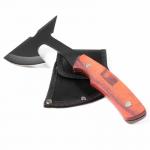
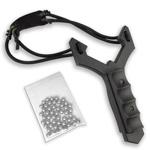
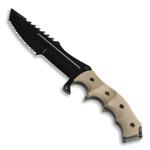

 (4)
(4)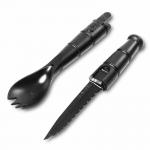
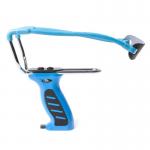
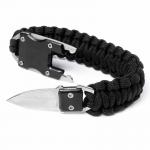
 (2)
(2)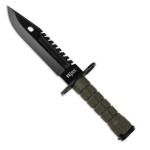

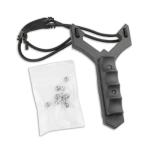
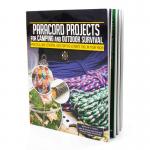
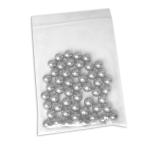
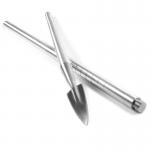
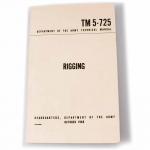
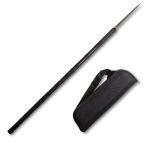
 (3)
(3)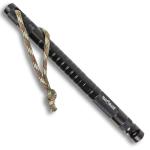
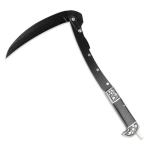
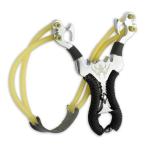
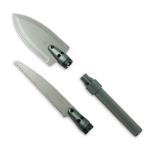
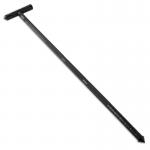
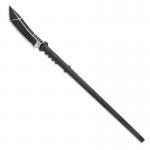
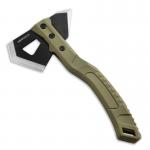
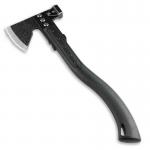
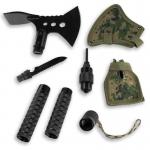
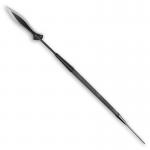
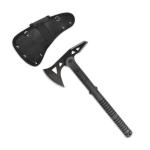


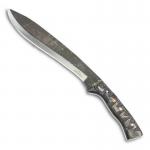
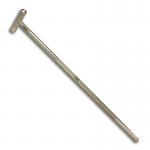
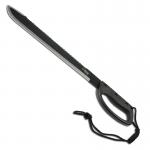
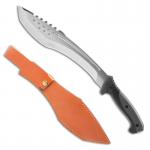
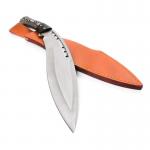
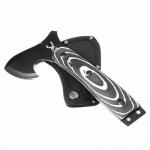
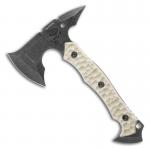
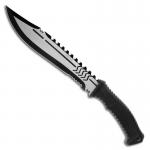
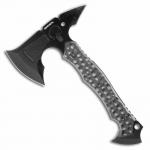
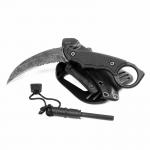
 (1)
(1)
